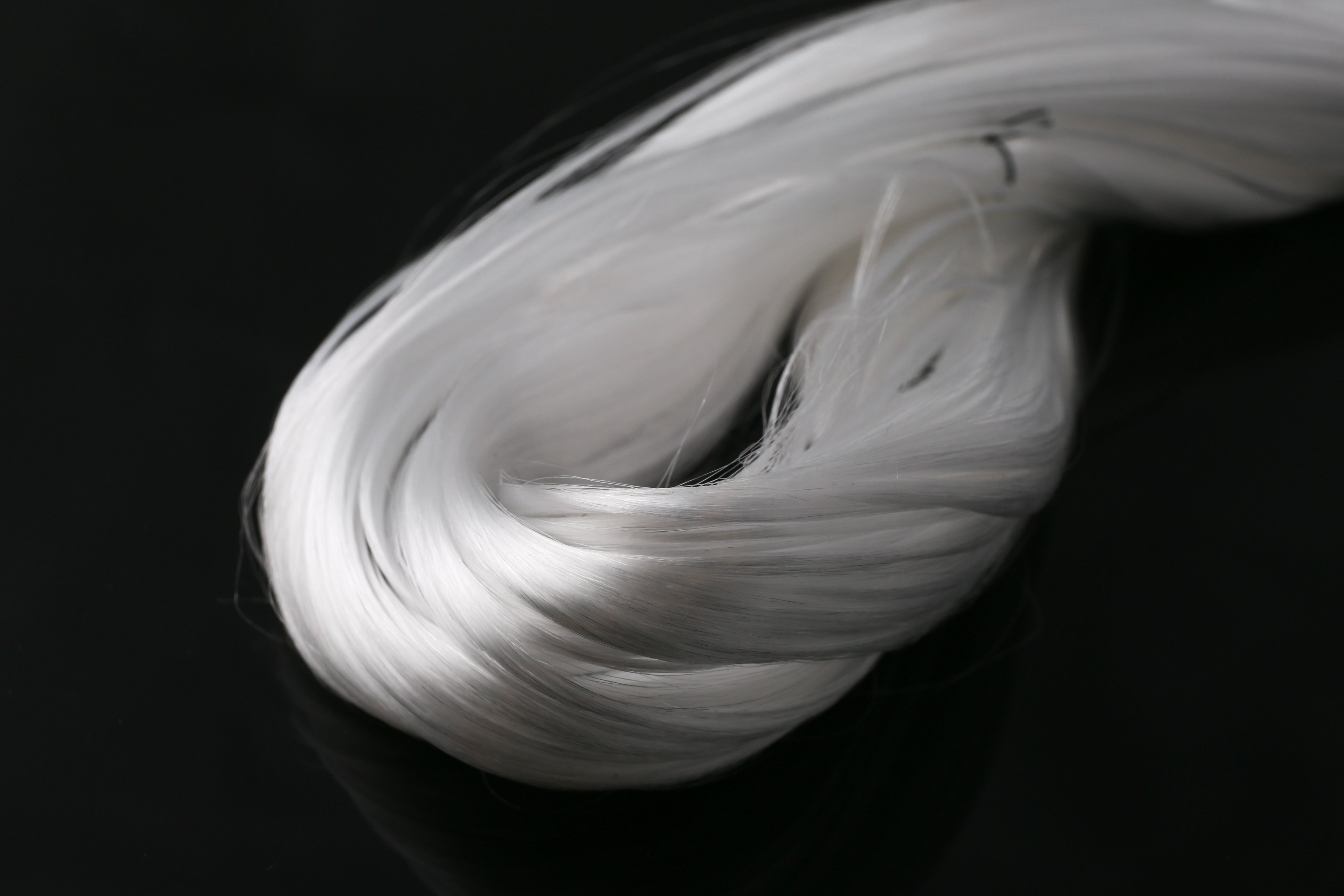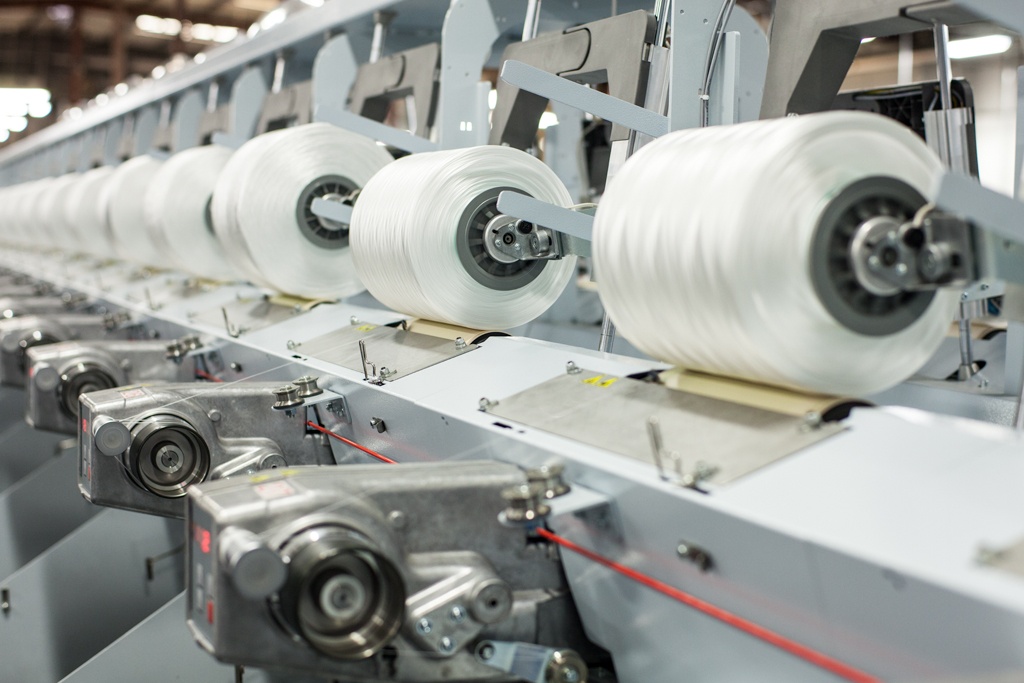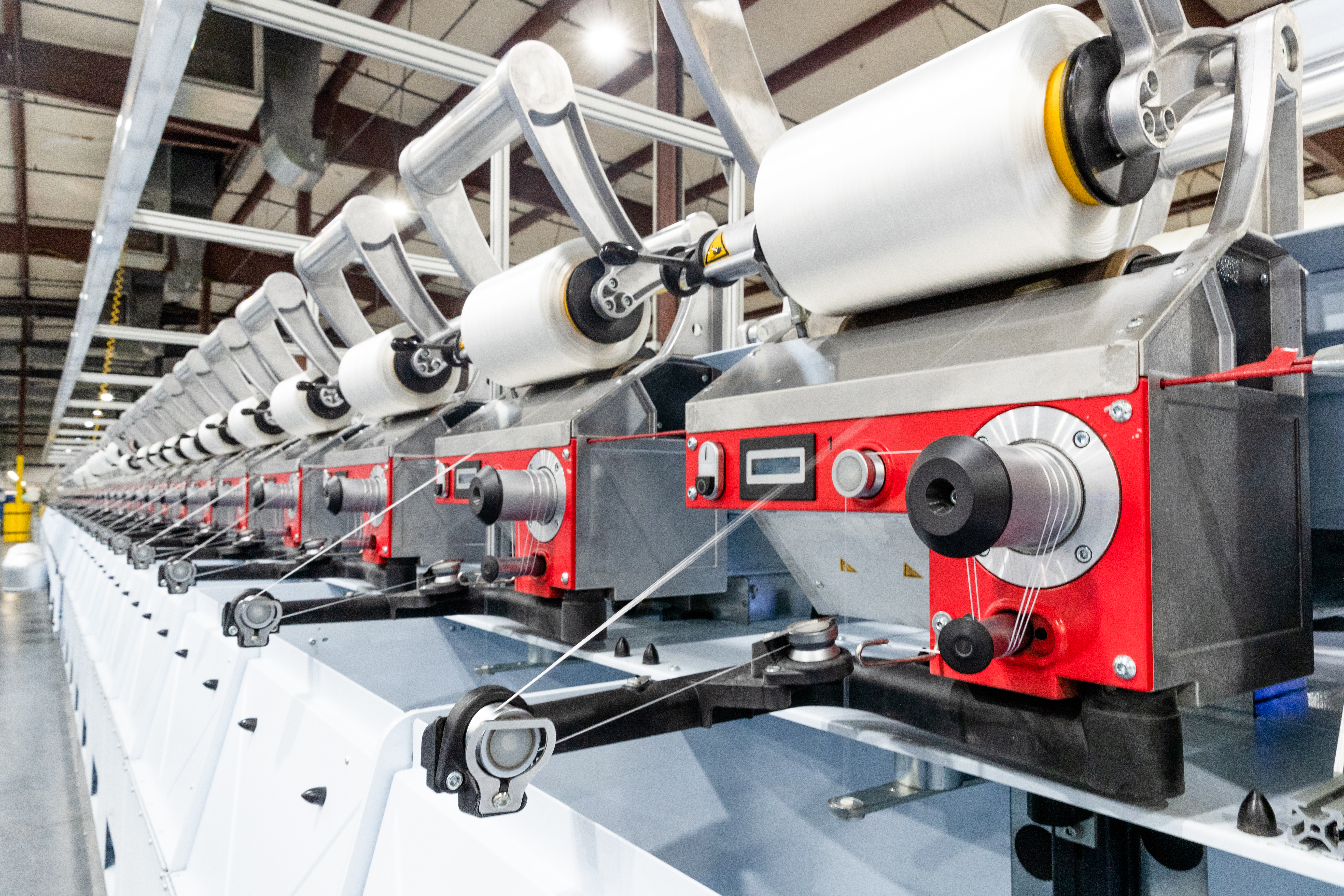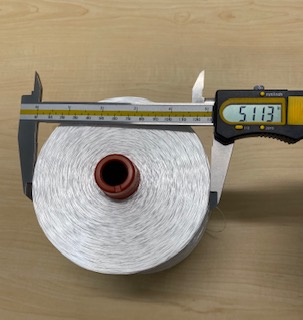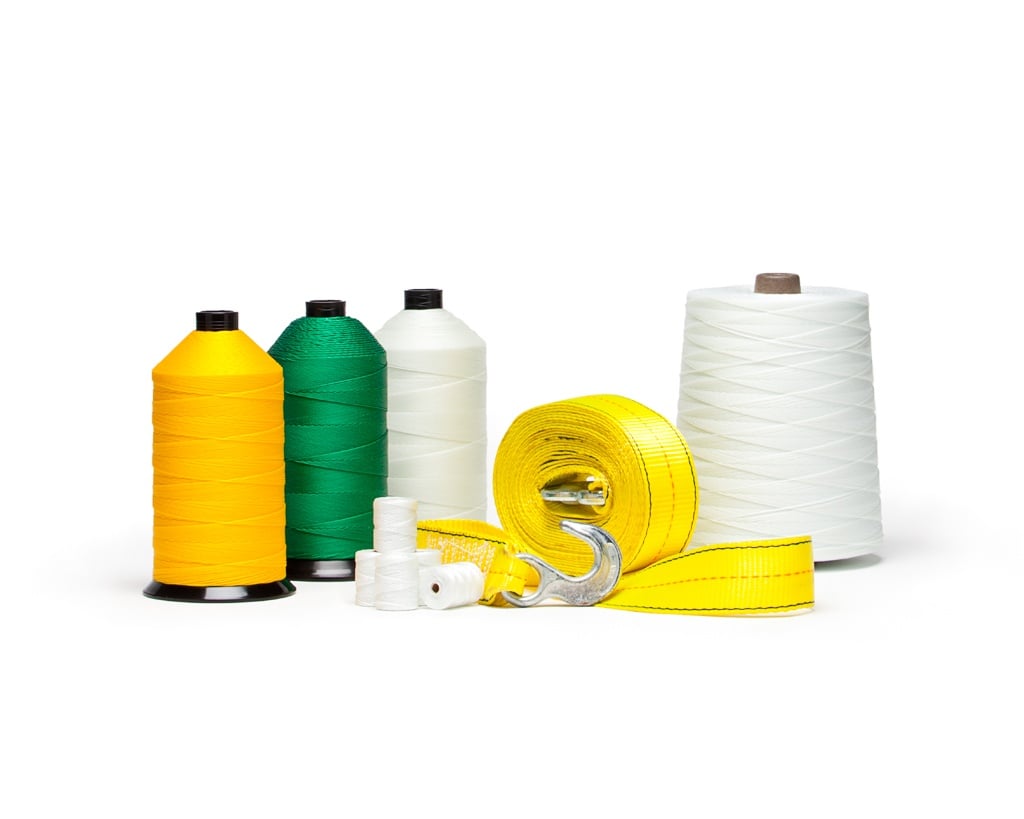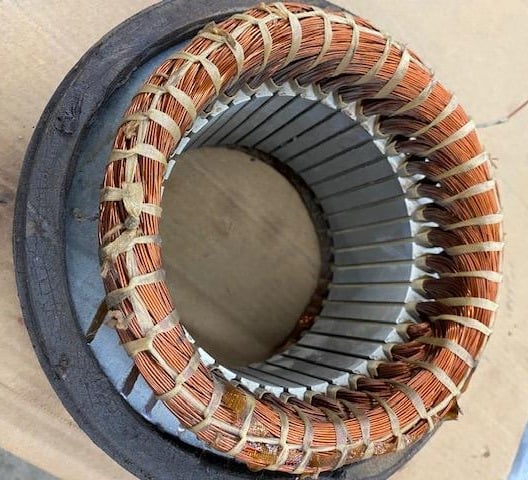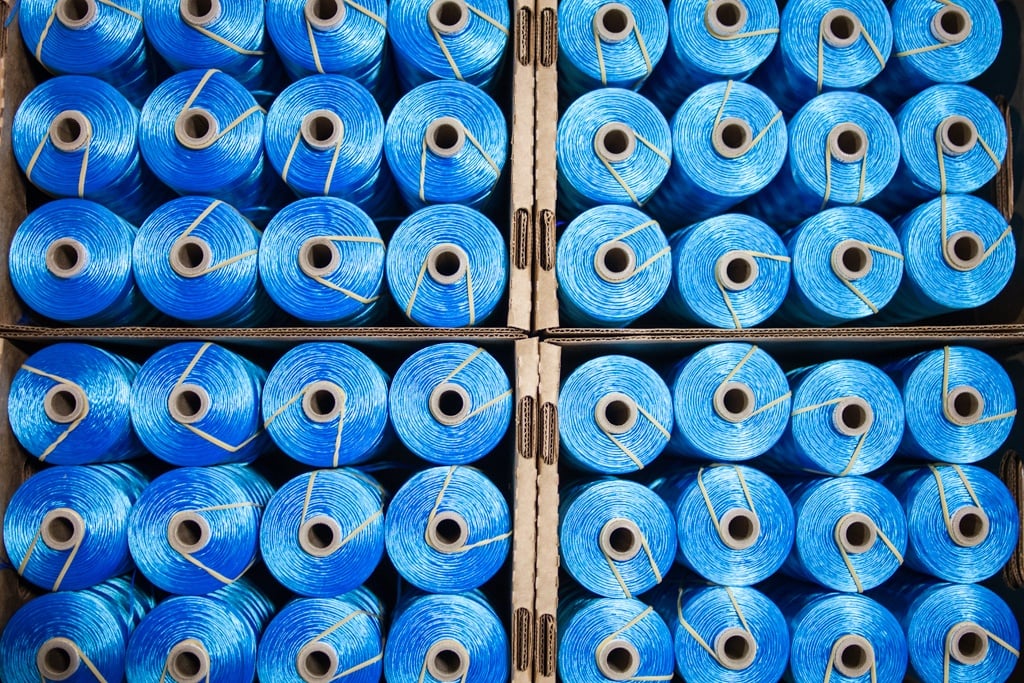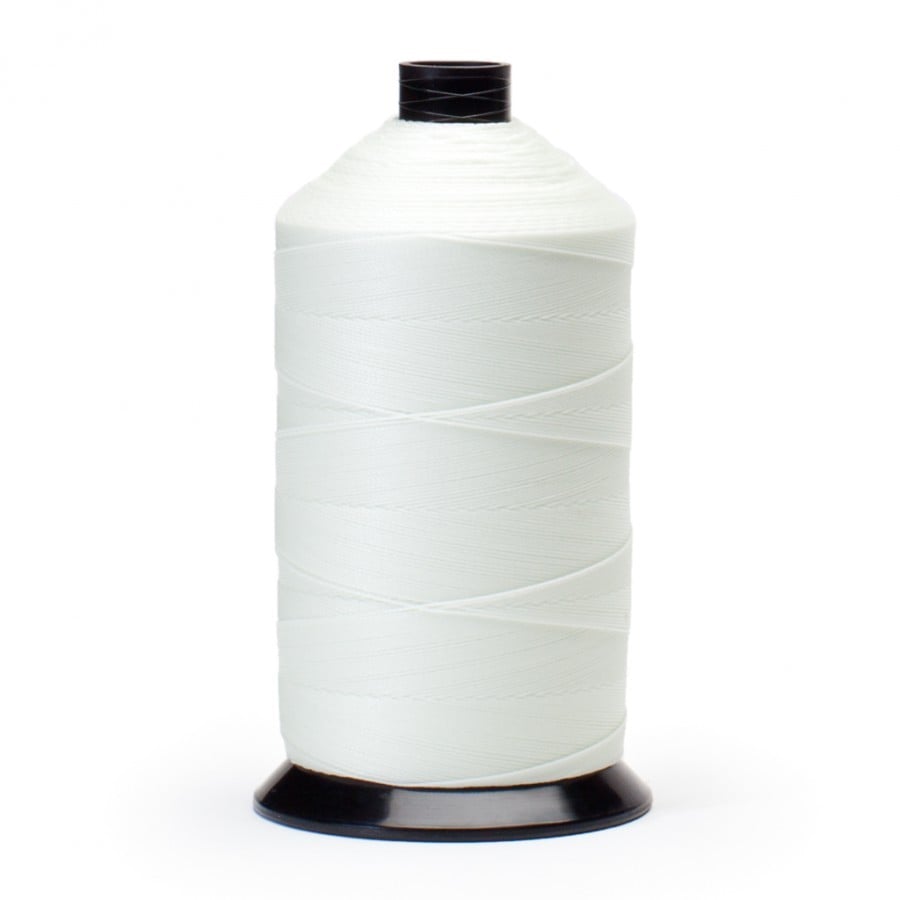February 2025 US Tariff Impact on HTS codes 5401 and 5402 for synthetic yarns and fibers
Read morePosts by Service Thread
- By Service Thread
- 06/25/21
- 0 Comments
In today’s industrial textile manufacturing processes, spin finish plays an important role in the overall performance of Polyester Continuous Filament (CF) fibers and yarns. Nylon and polyester fiber yarn production lines commonly use additive finishes, and the market for polyester filaments is growing rapidly due to the sometimes-high cost and limited availability of nylon and the use of polyester as a cheaper more available substitution many applications.
Read more- By Service Thread
- 04/07/21
- 0 Comments
Because continuous multifilament polyester yarns are used in a wide variety of applications and conditions, polyester yarn manufacturers are required to have diverse product portfolios to accommodate them, including yarns in a wide denier range with various physical properties.
Read more- By Service Thread
- 01/13/21
- 0 Comments
Polyester is a category of polymers, and all polyesters share certain characteristics however there are some significant differences in physical properties among all the types of multifilament polyester. Not all polyesters are the same.
Read more- By Service Thread
- 12/04/20
- 0 Comments
In October 2017 DuraFiber Technologies, previously Performance Fibers, once a leading US supplier of high-tenacity polyester fibers, engineered fabrics, sewing threads and advanced materials, closed its three facilities in the United States
DuraFiber produced a number of widely used types of polyester in the United States and the different types are still referenced by companies searching for quality alternatives today. Many of the available alternatives happen to have more consistent properties with tighter tolerances but this ultimately depends on the type of alternative polyester.
Read more- By Service Thread
- 10/09/20
- 0 Comments
Hose manufacturing partners running high tenacity polyester, nylon and para-aramid yarns all strive for one thing: lower manufacturing costs. There are many cost cutting methods, but the most effective are automation and faster line speeds. Faster line speeds often depend on equipment capabilities, design and material supply.
Read more- By Service Thread
- 07/08/20
- 0 Comments
Industrial sewing thread is quite different from the thread that is typically used in garments and apparel. If you’re looking for household sewing thread, we’d like to direct you to Walmart, Michael’s, or another household thread supplier.
Not sure which is which? Here’s a look at the main differences between industrial sewing thread and household sewing thread, plus some tips on choosing the right thread for your application.
- By Service Thread
- 06/29/20
- 0 Comments
When you buy an electric motor, what is often unseen when handling it is the work that goes into helping extend its life by securing the end coils of windings. This process is called stator lacing. Tightly lacing the coils adds stability and helps protect the windings from vibration, which can cause fatigue and shorten a motor’s life. It also holds electronic, thermal, and other sensory devices in place during the dipping and baking process.
Service Thread’s round lacing cords are available in polyester, nylon, and para-aramid materials such as DuPont™ Kevlar® material. These are cabled constructions, typically three or sometimes four-ply, which offer a round cross-section. Round twisted sizes in nylon and polyester cords can range from number 138 to 690 (tex 135 to 700), offering minimum breaking strengths in the range of 18 to 100 pounds.
However, most common round twisted sizes are number 346 (tex 350), number 415 (tex 400), number 554 (tex 600), and number 690 (tex 700), which offer minimum breaking strengths in the range of 45 to 100 pounds. Round twisted lacing cords number 138 to 690 (tex 135 to 700) will have a diameter between about .01 to .05 inches, while the diameter of most common lacing cords will be .035 inches plus or minus about 15%.
Flat number 554 (tex 600) nylon lacing tape is also a popular choice. Being wider than round twisted thread, it will spread the stress over the coil surface during winding and tying rather than having it located at a small radius. Flat tape also offers increased grip due to its larger surface area.
Round thread can be laced evenly from large supply packages of more than or equal to 10 pounds. Flat constructions are typically rolled to prevent any twisting of the tape. Round twisted lacing cords are much preferred over cable ties, which turn brittle over time through oxidation and break and leave sharp edges which can cut installers’ hands when reaching into confined spaces.
Lacing cords may have some physical requirements, depending on the motor design and coil assembly.
- By Service Thread
- 05/19/20
- 2 Comments
Bonded thread size is communicated in various ways, mainly by ticket number and tex size. Although it’s easy to get caught up in the lingo and confuse the two, the ticket number and tex size are distinct characteristics of a bonded thread.
Read more- By Service Thread
- 03/23/20
- 0 Comments
When you’re sewing at high speeds, bonded thread prevents snags and breaks that cause production interruptions and create flaws in your products. In many applications, bonded sewing thread is almost always a superior choice.
Read moreService Thread

Recent Posts
February 2025 US Tariff Impact on HTS codes 5401 and 5402 for synthetic yarns and fibers
Read moreOlder Posts
In today’s industrial textile manufacturing processes, spin finish plays an important role in the overall performance of Polyester Continuous Filament (CF) fibers and yarns. Nylon and polyester fiber yarn production lines commonly use additive finishes, and the market for polyester filaments is growing rapidly due to the sometimes-high cost and limited availability of nylon and the use of polyester as a cheaper more available substitution many applications.
Read moreBecause continuous multifilament polyester yarns are used in a wide variety of applications and conditions, polyester yarn manufacturers are required to have diverse product portfolios to accommodate them, including yarns in a wide denier range with various physical properties.
Read morePolyester is a category of polymers, and all polyesters share certain characteristics however there are some significant differences in physical properties among all the types of multifilament polyester. Not all polyesters are the same.
Read moreIn October 2017 DuraFiber Technologies, previously Performance Fibers, once a leading US supplier of high-tenacity polyester fibers, engineered fabrics, sewing threads and advanced materials, closed its three facilities in the United States
DuraFiber produced a number of widely used types of polyester in the United States and the different types are still referenced by companies searching for quality alternatives today. Many of the available alternatives happen to have more consistent properties with tighter tolerances but this ultimately depends on the type of alternative polyester.
Read moreLower Manufacturing Costs By Increasing Hose Production Line Speeds
- By Service Thread
- 10/09/20
- 0 Comments
Hose manufacturing partners running high tenacity polyester, nylon and para-aramid yarns all strive for one thing: lower manufacturing costs. There are many cost cutting methods, but the most effective are automation and faster line speeds. Faster line speeds often depend on equipment capabilities, design and material supply.
Read moreIndustrial sewing thread is quite different from the thread that is typically used in garments and apparel. If you’re looking for household sewing thread, we’d like to direct you to Walmart, Michael’s, or another household thread supplier.
Not sure which is which? Here’s a look at the main differences between industrial sewing thread and household sewing thread, plus some tips on choosing the right thread for your application.
When you buy an electric motor, what is often unseen when handling it is the work that goes into helping extend its life by securing the end coils of windings. This process is called stator lacing. Tightly lacing the coils adds stability and helps protect the windings from vibration, which can cause fatigue and shorten a motor’s life. It also holds electronic, thermal, and other sensory devices in place during the dipping and baking process.
Service Thread’s round lacing cords are available in polyester, nylon, and para-aramid materials such as DuPont™ Kevlar® material. These are cabled constructions, typically three or sometimes four-ply, which offer a round cross-section. Round twisted sizes in nylon and polyester cords can range from number 138 to 690 (tex 135 to 700), offering minimum breaking strengths in the range of 18 to 100 pounds.
However, most common round twisted sizes are number 346 (tex 350), number 415 (tex 400), number 554 (tex 600), and number 690 (tex 700), which offer minimum breaking strengths in the range of 45 to 100 pounds. Round twisted lacing cords number 138 to 690 (tex 135 to 700) will have a diameter between about .01 to .05 inches, while the diameter of most common lacing cords will be .035 inches plus or minus about 15%.
Flat number 554 (tex 600) nylon lacing tape is also a popular choice. Being wider than round twisted thread, it will spread the stress over the coil surface during winding and tying rather than having it located at a small radius. Flat tape also offers increased grip due to its larger surface area.
Round thread can be laced evenly from large supply packages of more than or equal to 10 pounds. Flat constructions are typically rolled to prevent any twisting of the tape. Round twisted lacing cords are much preferred over cable ties, which turn brittle over time through oxidation and break and leave sharp edges which can cut installers’ hands when reaching into confined spaces.
Lacing cords may have some physical requirements, depending on the motor design and coil assembly.
What Is the Difference Between Ticket Size and Tex Size for Bonded Thread?
- By Service Thread
- 05/19/20
- 2 Comments
Bonded thread size is communicated in various ways, mainly by ticket number and tex size. Although it’s easy to get caught up in the lingo and confuse the two, the ticket number and tex size are distinct characteristics of a bonded thread.
Read moreWhen you’re sewing at high speeds, bonded thread prevents snags and breaks that cause production interruptions and create flaws in your products. In many applications, bonded sewing thread is almost always a superior choice.
Read more


